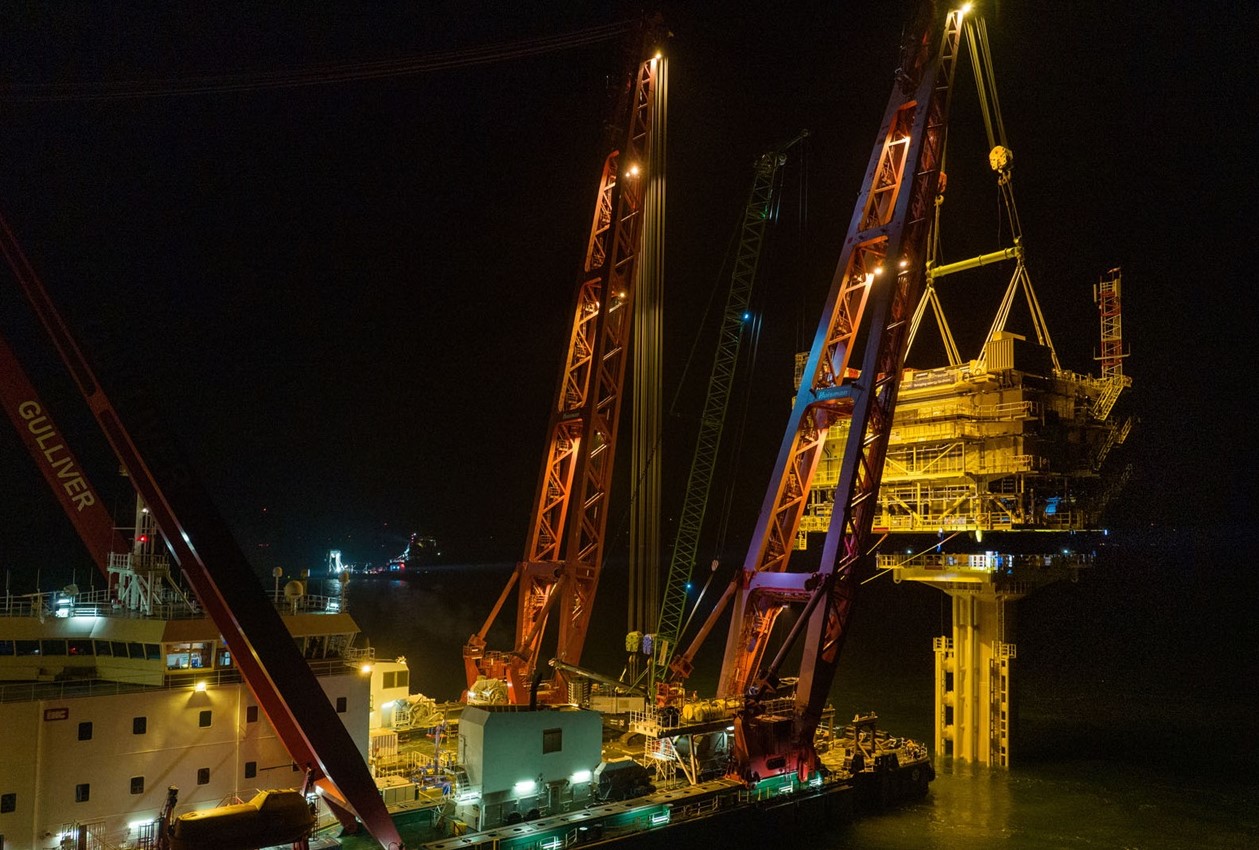Germany – Kaskasi, RWE’s sixth offshore wind farm being built 35 kilometres north of the island of Heligoland has celebrated a “wedding” on the high seas.
When the substation topside is successfully placed on the foundation, the construction process is referred to as a “wedding.” The offshore substation is the beating heart of the project, as it is here that electricity generated by each wind turbine is combined and converted to the required transmission voltage.
The 1,400-tonne substation topside began its journey in Danish Aalborg at the Bladt Industries manufacturing facility and took two days to ship across the North Sea. Gulliver, a SCALDIS Floating Heavy Lift Vessel, placed the substation on the monopile foundation, completing the installation of the Kaskasi offshore wind farm’s heaviest component.
Foundation installation
Simultaneously, foundation installation work is being carried out: Four vessels, including Seaway 7’s Strashnov, DEME’s Neptune and Sea Challenger, and Fred Olsen’s Blue Tern, are working on the installation of 38 monopile foundations for wind turbines and their transition pieces. The foundations, which can be up to 64 meters long, weigh up to 740 tons, or about 600 small cars. The RWE Control Room on Heligoland coordinates the operations and processes at the offshore construction site around the clock. Ems Maritime Offshore’s nautical staff is assisting the RWE team.
RWE is using two installation methods to install the foundations into the seabed at depths of 18 to 25 meters: traditional hammering and innovative vibro pile driving technology, which has the potential to reduce underwater noise emissions. This is especially beneficial to the marine environment. The “VISSKA” research project, funded by the German Federal Ministry of Economic Affairs and Climate Action, is accompanying the vibro technology pilot implementation in Kaskasi.
Testing new technology
Three new technologies will be tested at the Kaskasi offshore wind farm. Three monopile foundations will be surrounded by special collars installed by RWE (Collared Monopile). Another advancement is the use of foundations that are encased in a concrete ring that expands in the seabed and were installed using vibro pile driving (Self-Expanding Pile Shoe). In addition, at Kaskasi, a sustainable product will make its German debut: Siemens Gamesa and RWE will install recyclable rotor blades on a number of wind turbines. The blades are the first of their kind, thanks to an innovative resin that allows components to be recycled for new applications after their lifecycle is completed. The wind turbines are expected to be installed this summer. A total of 38 wind turbines are expected to be fully operational by the end of 2022. The Kaskasi offshore wind farm will then have the capacity to provide green electricity to the equivalent of approximately 400,000 households each year.





